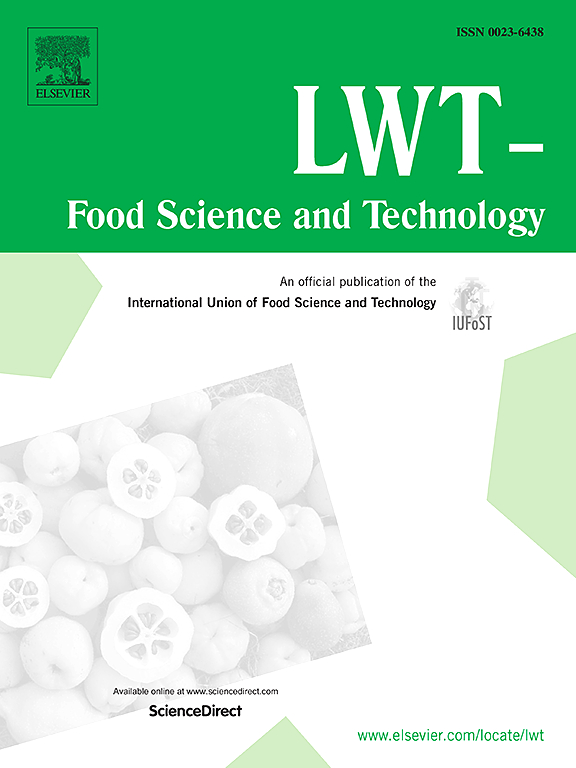Exploiting the synergy among olive oil mill wastewater, microalgae, and fermentation for wheat bread fortification
IF 6
1区 农林科学
Q1 FOOD SCIENCE & TECHNOLOGY
引用次数: 0
Abstract
This study aimed to harness the potential of olive oil mill wastewater (OMWW) through fermentation, unlocking its polyphenolic content and associated health benefits. Given the harsh condition of OMWW for microbial growth, we hypothesized that its combination with Chlorella vulgaris (CHL) as a protein source could enhance microbial adaptation and fermentation outcomes. The primary objective was to investigate how the synergy between OMWW and CHL, mediated by fermentation, could improve the bioavailability of phenolic compounds and proteins, ultimately creating functional ingredients for bread fortification. All yeast and especially lactic acid bacteria (LAB) strains used as starters were able to grow and effectively utilized sugars when OMWW was mixed with C. vulgaris. The interactions between proteins and phenolics and the impact of fermentation on their bioavailability were analyzed. The resulting fermented OMWW-CHL mixtures exhibited promising nutritional and anti-fungal profiles, suitable for fortifying wheat bread. By replacing half of the water fraction in bread making, the fermented OMWW-CHL mixture enhanced sensory attributes and delayed mold contamination. The enriched free phenolic profile of fortified breads may have a positive contribution to a balanced diet.

橄榄油厂废水、微藻和发酵协同作用在小麦面包强化中的应用
本研究旨在通过发酵利用橄榄油厂废水(OMWW)的潜力,解锁其多酚含量和相关的健康益处。考虑到OMWW对微生物生长的恶劣条件,我们推测其与小球藻(Chlorella vulgaris, CHL)结合作为蛋白质源可以提高微生物的适应能力和发酵效果。主要目的是研究OMWW和CHL之间的协同作用如何通过发酵介导,提高酚类化合物和蛋白质的生物利用度,最终创造出面包强化的功能性成分。作为发酵剂的酵母菌,尤其是乳酸菌(LAB)在与普通酵母混合时均能生长并有效利用糖。分析了蛋白质与酚类物质的相互作用以及发酵对其生物利用度的影响。发酵得到的OMWW-CHL混合物具有良好的营养和抗真菌特性,适用于小麦面包的强化。通过在面包制作中替换一半的水,发酵的OMWW-CHL混合物增强了感官属性并延迟了霉菌污染。强化面包中富含的游离酚可能对均衡饮食有积极的贡献。
本文章由计算机程序翻译,如有差异,请以英文原文为准。
求助全文
约1分钟内获得全文
求助全文
来源期刊

LWT - Food Science and Technology
工程技术-食品科技
CiteScore
11.80
自引率
6.70%
发文量
1724
审稿时长
65 days
期刊介绍:
LWT - Food Science and Technology is an international journal that publishes innovative papers in the fields of food chemistry, biochemistry, microbiology, technology and nutrition. The work described should be innovative either in the approach or in the methods used. The significance of the results either for the science community or for the food industry must also be specified. Contributions written in English are welcomed in the form of review articles, short reviews, research papers, and research notes. Papers featuring animal trials and cell cultures are outside the scope of the journal and will not be considered for publication.
 求助内容:
求助内容: 应助结果提醒方式:
应助结果提醒方式:


